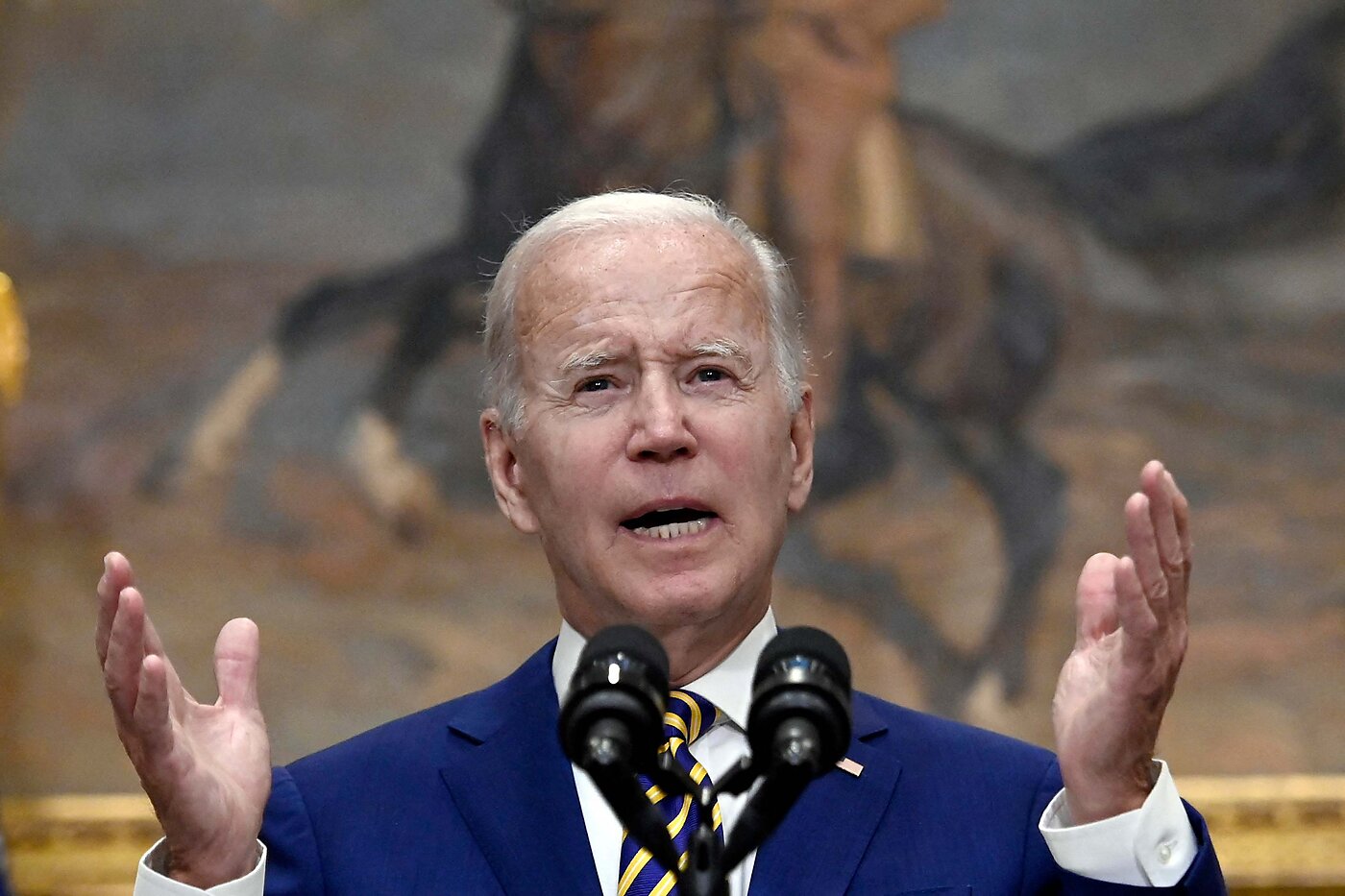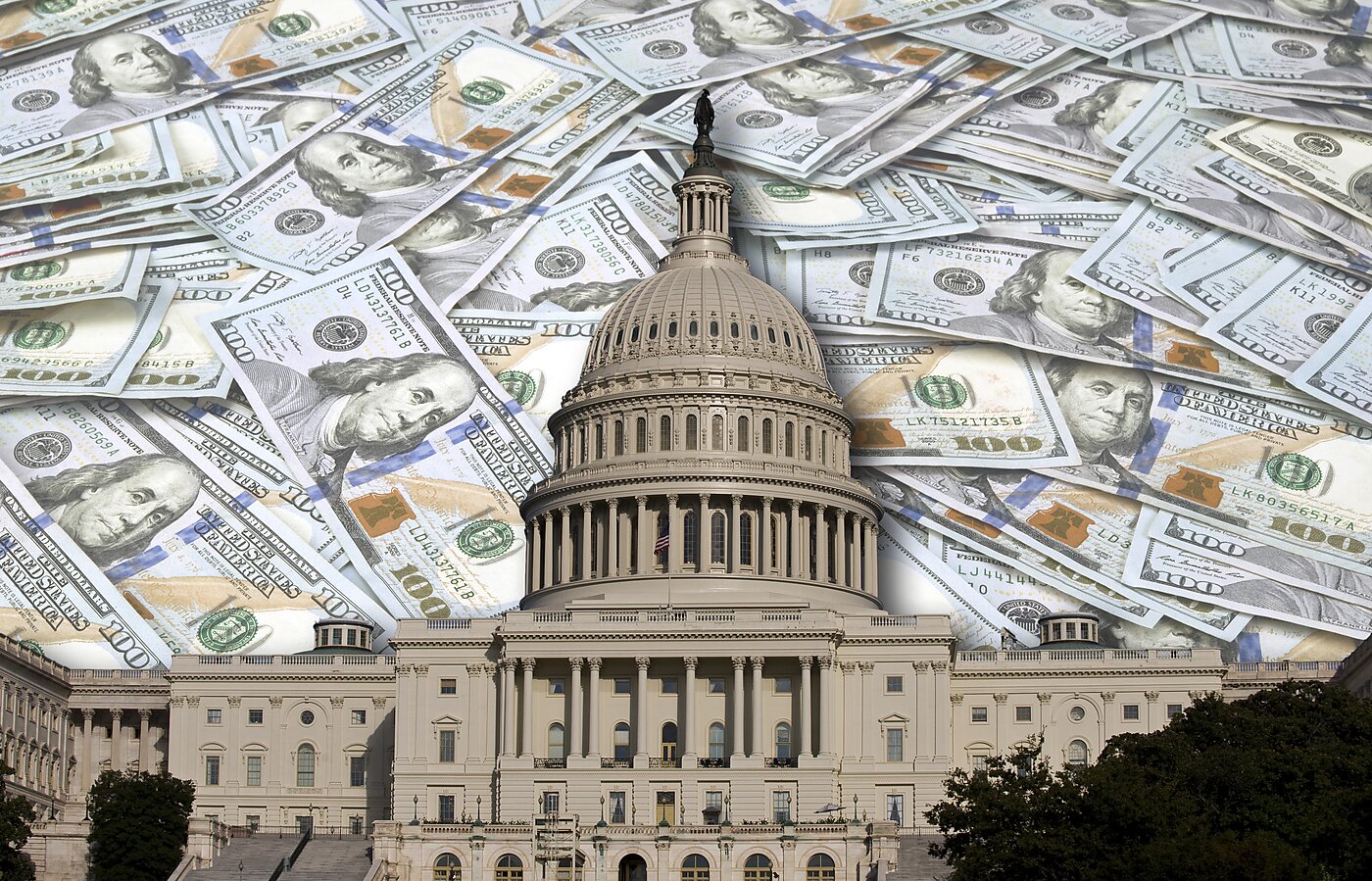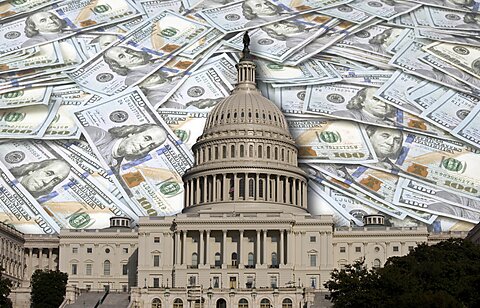
Following his State of the Union address, President Biden released his budget proposal for fiscal year 2025. By not addressing the more than $3 trillion of automatic tax increases in 2026, the budget fails to tackle a key fiscal challenge, and if it had, the budget would not reduce the deficit.
As written, the budget proposes $4.9 trillion in higher revenue over ten years through costly tax increases on businesses and individuals. The proposed tax increases would raise US tax rates to some of the highest in the developed world and elevate revenues to 20.3 percent of GDP by 2034, higher than any point in US history.
The budget outlines a tax code that would rely on new and higher taxes on American employers and higher‐income families, bejeweled with complicated tax credits, exemptions, deductions, and inclusions for Americans at all income levels.
The budget does not account for some of the most important and costly automatic tax changes. The budget acknowledges but does not explicitly extend the 2017 Tax Cuts and Jobs Act, which expires at the end of 2025, increasing taxes on virtually every American family. Thus, the budget does not account for the roughly $2 trillion in lower revenue from making the Republican tax cut permanent for people earning less than $400,000 a year (following the president’s pledge not to increase taxes below that income).
The budget also temporarily expands the child tax credit and adds new temporary housing tax subsidies, which could cost another $1.5 trillion over ten years if made permanent. In total, the unincorporated temporary tax cuts described in the budget are likely larger than the headline $3.3 trillion in deficit reduction.
While the budget is elusive about how the tax code will change for middle‐ and lower‐income Americans, it is quite detailed in its proposals to increase taxes on their employers and higher‐income Americans.
The budget includes higher taxes on wage income, higher taxes on investment income, and higher taxes on businesses.
High taxes on wage income reduce the number of hours people work, the incentive to acquire new skills, choice of occupation, and the amount of work effort. The highest income earners are frequently people with unique skills and lots of training, such as doctors, business owners, entrepreneurs, lawyers, and CEOs. Higher taxes on these individual’s wages will translate into strong disincentives against their most productive work.
The US federal tax system is also already very progressive. President Biden claims that the richest Americans pay a tax rate of just 8 percent. However, according to his Treasury Department, the highest‐income Americans pay the highest average tax rates of more than 33 percent, and the top 10 percent of income earners pay more than 60 percent of all federal taxes (and 76 percent of income taxes). The budget would substantially increase these percentages, making the federal government even more reliant on a smaller subset of taxpayers.

Higher taxes on investment and business income—corporate income, pass‐through business income, capital gains, and unrealized wealth—directly reduce incentives to invest in and grow the types of businesses that employ millions of Americans and are the envy of the rest of the world. A series of recent papers confirm that the 2017 business tax cuts boosted domestic investment by about 20 percent. Reversing those reforms and adding new tax increases on investment returns will have the opposite effect, depressing the types of activity that lead to higher wages and faster productivity growth. If all of Biden’s tax increase were enacted, Americans would pay income tax rates well‐above the average across the OECD.
The following list includes some of the president’s major tax proposals.
Increase top marginal tax rate to 39.6 percent. The 2024 tax year top marginal income tax rate of 37 percent applies to income earned above $609,350 for single filers ($731,200 married). The budget proposes returning the top rate to 39.6 percent, where it was in 2017 before the tax cut, and the threshold for the top tax bracket is reduced to $400,000 for single filers ($450,000 married). After accounting for state and local income taxes, Americans in many places, including California, Hawaii, New Jersey, New York, and Washington DC, will face top marginal income rates above 50 percent, which is well above plausible revenue‐maximizing levels.
Increase corporate income tax rate to 28 percent. The 2017 tax cuts lowered the corporate income tax rate from 35 percent—the highest rate in the developed world—to 21 percent. After accounting for state corporate income taxes, the United States’ current average corporate tax rate remains higher than the worldwide average. Biden proposes raising the corporate income tax to 28 percent, which would leave the US with the second‐highest corporate tax rate in the OECD, behind Columbia.
Adopts new global minimum taxes. In addition to a higher headline rate, the budget makes major changes to international taxation. The president’s proposals are intended to align the United States with the OECD Pillar Two global minimum tax by 1) modifying the existing global minimum tax (GILTI) and increasing its effective tax rate to 21 percent, 2) replacing the Base Erosion and Anti‐Abuse Tax (BEAT) with an OECD‐compliant UTPR, and 3) replacing current intangible investment incentives (FDII) with unspecified research subsidies. The budget would also increase the 2022 Inflation Reduction Act’s 15 percent Corporate Alternative Minimum Tax (CAMT) to 21 percent. The Biden administration proposals would come with high economic costs to US multinationals and expose the US Treasury to potential revenue losses as taxable profits face new incentives to be shifted to other countries.
Tax capital gains and dividends at top rate. Long‐term capital gains and dividends are taxed at a top rate of 20 percent, plus the 3.8 percent Net Investment Income Tax (NIIT). The lower tax rate on investment income (lower than income taxes on wages) reflects that the investment’s principal has already been subject to wage taxes when it was earned, and the business profits were also already taxed by the corporate income tax. The budget proposes taxing capital gains at the new top marginal income tax rate of 39.6 percent (plus a higher 5 percent NIIT) for taxpayers whose income exceeds $1 million.
Expand Net Investment Income Tax (NIIT) at 5 percent rate. Obamacare’s NIIT of 3.8 percent applies to most non‐wage passive income (primarily capital gains and other investment income) for taxpayers with income above $200,000 single ($250,000 married). The NIIT was intentionally designed to exempt active business income to spare small and family‐owned businesses from higher taxes. For incomes over $400,000, the budget proposes expanding the NIIT to include more types of income and raises the rate to 5 percent. Combined with taxing capital gains at top income tax rates, the 5 percent NIIT raises the top federal marginal capital gains tax rate to 44.6 percent.
Quadruple stock buyback tax. The Inflation Reduction Act of 2022 implemented a new 1 percent excise tax on the total value of stock repurchases or “stock buybacks.” A stock buyback is when a business repurchases shares to return unused profits to investors. It is similar to an optional one‐time dividend payment. The budget proposes quadrupling the new tax on buybacks to 4 percent, which will lower investors’ after‐tax return on the affected investments and likely induce firms to rely more heavily on dividend payments.
End step‐up in basis at death. Under current law, capital gains are taxed when the gain is realized—when the investment is sold and there is an actual profit to tax. If unrealized capital gains are inherited at death, no tax is due, and the value of the original investment from which taxable gains are measured (the “basis”) is increased or “stepped up” to the current value. Any future gains are taxable to the new owner when realized. Step‐up in basis protects inheritances, which are often active investments in businesses, from having to be liquidated to pay the tax. The budget proposes eliminating step‐up in basis, making death a taxable event. The change applies to unrealized capital gains over $5 million for single filers ($10 million married).
Creates “billionaire” minimum tax. The budget proposes a new minimum tax of 25 percent on income and unrealized capital gains for taxpayers with more than $100 million in total wealth. This new minimum tax would be a third, parallel income tax system, adding to the existing alternative minimum tax. The new minimum tax applies to two entirely new tax bases—wealth and unrealized capital gains. Defining and taxing wealth and unrealized capital gains pose numerous practical challenges and high economic costs.
Tax carried interest as ordinary income. Many investment managers are compensated with both a traditional wage and incentive‐based pay based on the profits from their investments. The portion of the investment earnings shared with the manager is known as “carried interest” and is taxed at lower capital gains tax rates. The budget would recharacterize this investment income, treating it as ordinary wage income.

Other significant tax increases include new limits on the deductibility of wages for highly paid employees, elimination of some 1031 like‐kind exchanges, permanent limits on loss limitations for pass‐through businesses, higher taxes on oil, gas, and coal production, limits on retirement contributions for some high‐income individuals, and a new 30 percent excise tax on digital asset mining electricity costs.
Ultimately, Biden’s budget is a fiscal and economic illusion. On spending, the budget fails to address some of the biggest spending programs in need of reform, such as Social Security, and proposes numerous new and expanded government programs that would make reaching fiscal solvency harder.
On taxes, the budget fails to account for large pending tax increases that, when addressed, will wipe away the claimed deficit reductions. The historically large tax increases on businesses and high‐income Americans are also inconsistent with the budget’s rosy economic assumptions. The president’s proposed tax increases would be self‐defeating, shrinking the economy and the tax base his budget relies on for higher revenues.





























